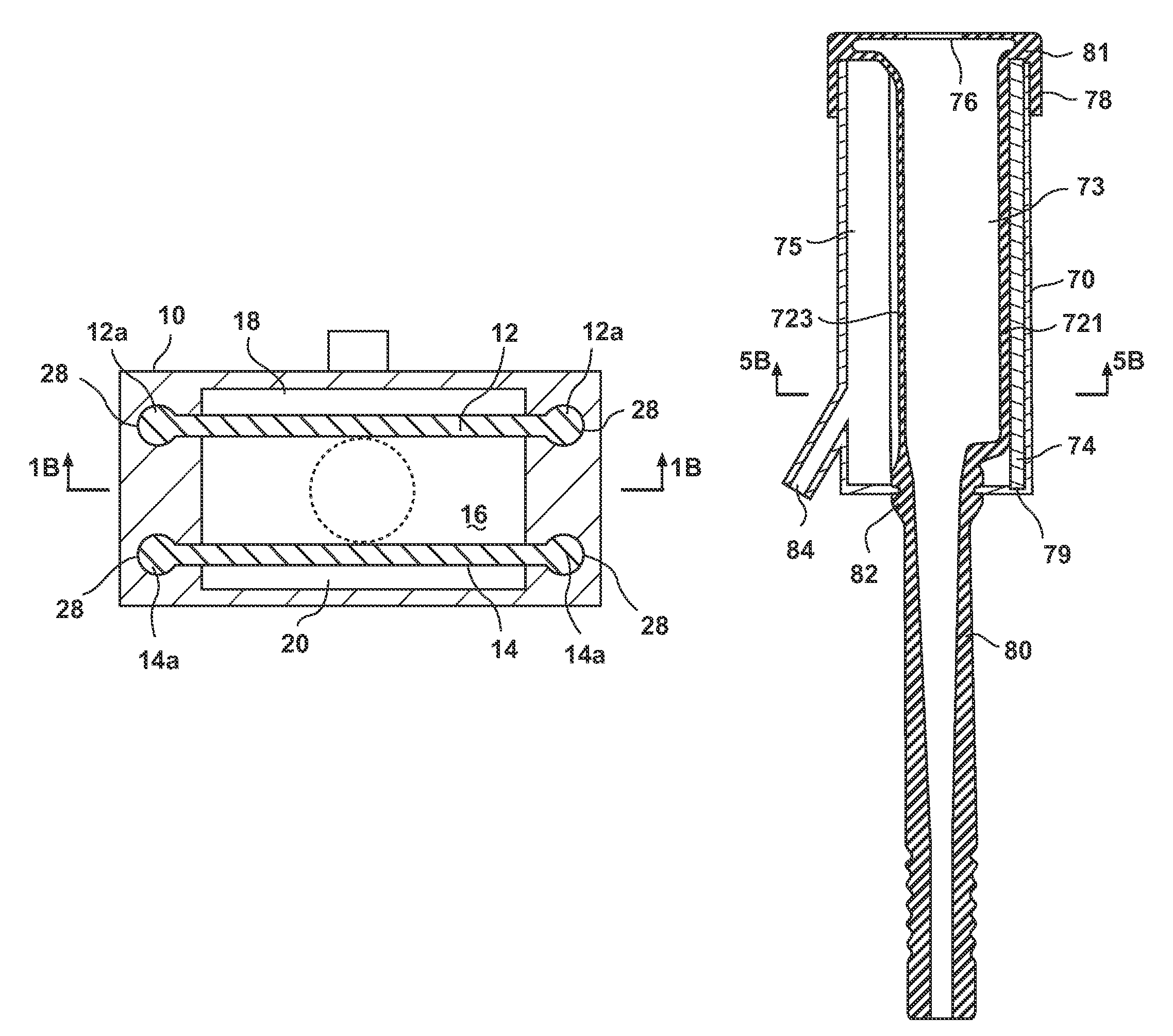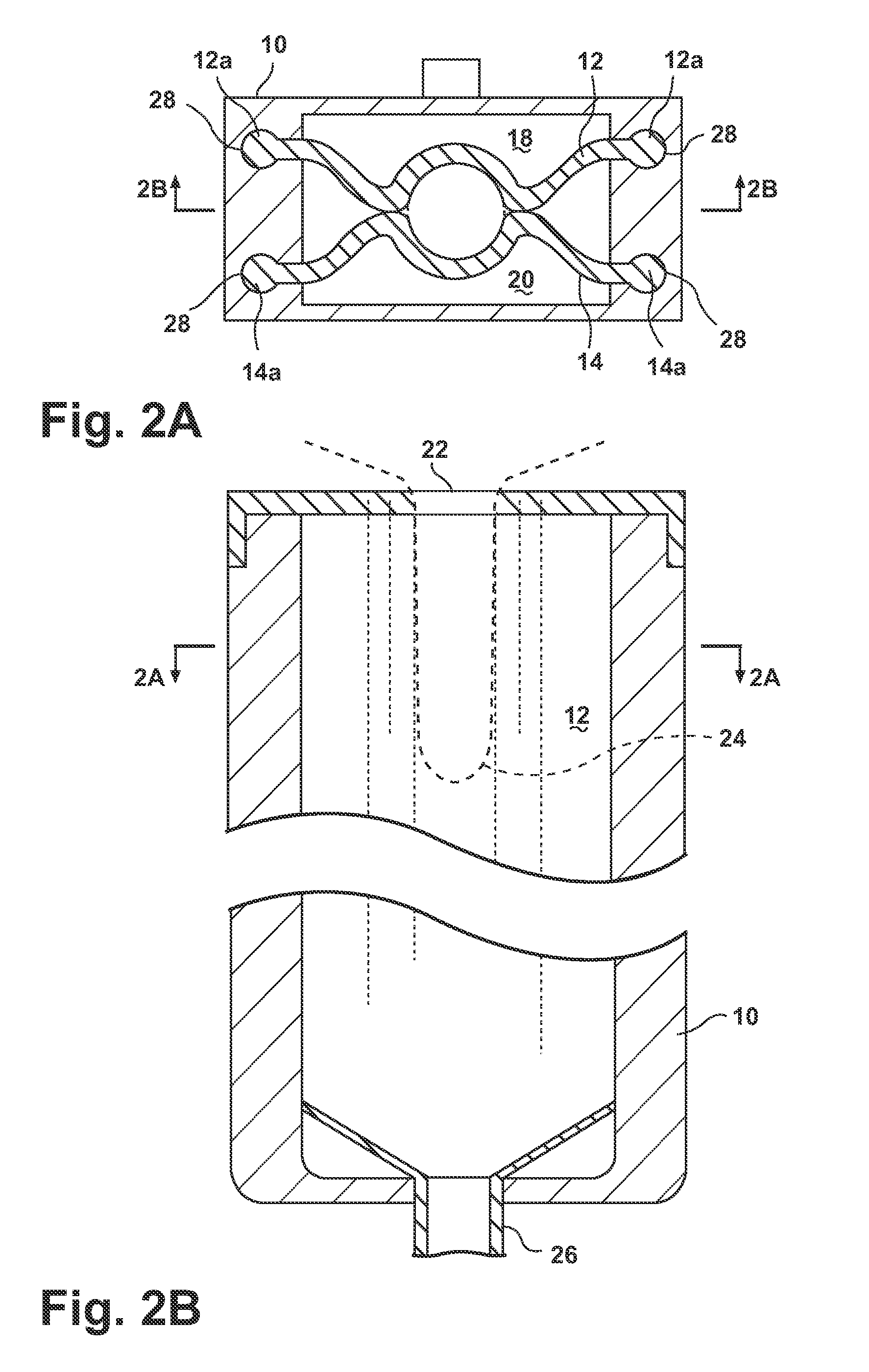Milking apparatus and method with transversely stretched membranes
a transverse stretch and membrane technology, applied in the field of milking apparatuses, can solve the problems of complex forces, little thought given to the precise effect of generated forces, complex forces, etc., and achieve the effect of increasing the control of pressure exerted
- Summary
- Abstract
- Description
- Claims
- Application Information
AI Technical Summary
Benefits of technology
Problems solved by technology
Method used
Image
Examples
first embodiment
[0045]Again, as in the first embodiment, the body 46 has an opening 54 into which the teat is received so that the teat lies within space 48. An outlet 56 is provided at the end of the body 46 remote from the opening 54 to which suction is applied.
[0046]Note that in this second embodiment the structure defined by the membranes 40, 42, 44 has an upper flange 58 which fits over the top of the body 46, and the suction outlet 56 is integral with the membranes 40, 44, 44 and has a further flange 60 fitting over the bottom of the body 46. Thus, in such arrangement it is possible for the membranes 40, 42, 44 to be under longitudinal tension (i.e. in the axial direction of the teat) as well as under transverse tension. Moreover, in the second embodiment, there is an inlet 62 communicating with the spaces 64 between the membranes 40, 42, 44 and the body 46, to enable an over-pressure to be applied to the outsides of the membranes 40, 42, 44. Indeed, it may be possible for this embodiment to ...
second embodiment
[0047]Again, FIGS. 4A and 4B illustrate the second embodiment when a teat 66 is inserted into the structure shown in FIGS. 3A and 3B, suction applied to the outlet 56, and an over-pressure applied to the inlet 62. The membranes, 40, 42, 44 close around the teat 66, closing the space 48. Thus, again, pressure is applied to the teat not only at the teat end, but along the barrel of the teat.
[0048]Thus, by putting the membranes under transverse tension, the pressures applied to the teat can be controlled so that pressure is applied over substantially the whole length of that part of the teat within the apparatus, thereby achieving an improved milking action, without exerting excessive forces on the end of the teat.
[0049]FIGS. 5A to 5D illustrate a third embodiment of the invention. In this embodiment, the liner is attached within the outer body 70 in such a way that there is no contact between the inside side surfaces of the outer body 70 and the liner. Similar to FIGS. 3 and 4, FIG. 5...
fifth embodiment
[0055]FIGS. 7A to 7C show the invention, which resembles the embodiment shown in FIGS. 5A to 5D. The same reference numbers are used for corresponding parts, and these are not described again. FIG. 7C shows a different type of attachment at the top (upper) end of rod 74. A protruding jaw 71 extends radially inwards from the interior wall of the outer body 70 and captures the rod 74, thereby holding it securely in place.
PUM
 Login to View More
Login to View More Abstract
Description
Claims
Application Information
 Login to View More
Login to View More - R&D
- Intellectual Property
- Life Sciences
- Materials
- Tech Scout
- Unparalleled Data Quality
- Higher Quality Content
- 60% Fewer Hallucinations
Browse by: Latest US Patents, China's latest patents, Technical Efficacy Thesaurus, Application Domain, Technology Topic, Popular Technical Reports.
© 2025 PatSnap. All rights reserved.Legal|Privacy policy|Modern Slavery Act Transparency Statement|Sitemap|About US| Contact US: help@patsnap.com



